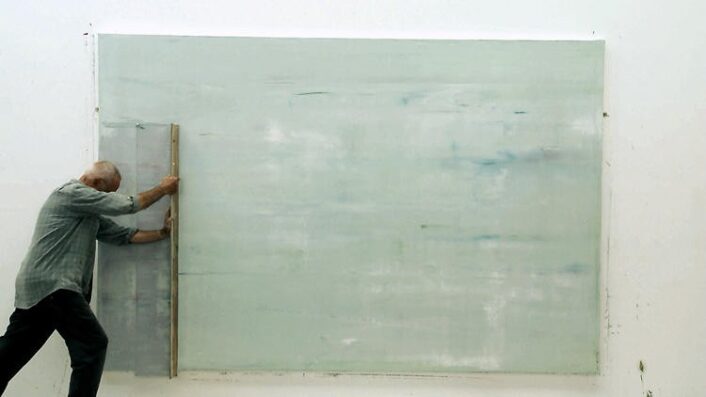Fine Art
Richter’s colorful gift
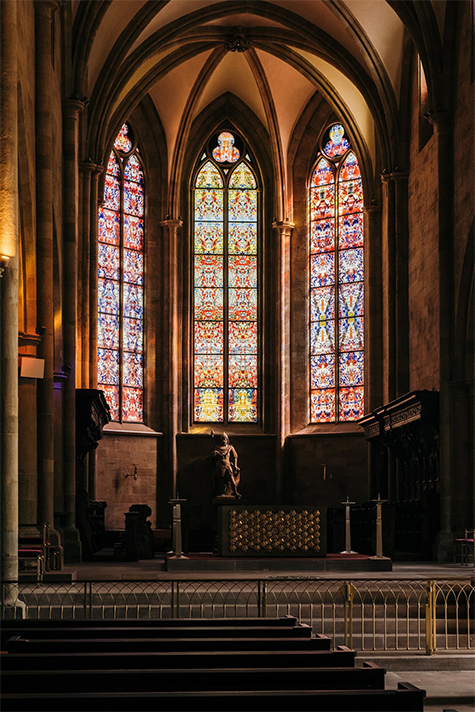
Tholey Abbey’s choir windows.
Image courtesy of: The New York Times, photographed by: Felix Schmitt
Calling it his last great work, last September Gerhard Richter unveiled three windows made from stained glass in a symmetrical design. The German artist’s windows were designed for Abbot Mauritius Choriol, the country’s oldest monastery. When inaugurated at Tholey Abbey, the windows were introduced as a gift from God, two generous patrons, and Gerhard Richter.
The windows are colorful; the two outer ones are made in deep reds and blues while the central window is made in a brilliant gold color. The abbot who oversees the Abbey said about the new windows, “Abstract art is not normally my thing. But you don’t need to be an art expert to appreciate the qualities of these.”
Some have foreshadowed that this will be the 88-year-old’s final project. With a résumé that has amassed more than 1,000 major works, many of which are masterpieces, a lot of Richter’s pieces are on a large scale. The 30-foot-tall windows stand watch over the Abbey’s altar which dates back to 634 AD. Since that time, the monastery has been home to Benedictine monks who meet five times a day to pray. Built in the lush hills of Germany near the borders of Luxembourg and France, the monks grow fruit, keep rabbits and chickens, and make quince schnapps, honey, and jam.
A dozen years ago, the monastery was about to close. Without the financial resources to upkeep the structure, the abbot said, “It was in a very sorry situation, financially and in personal terms.” At the perfect time, Edmund and Ursala Meiser stepped in. The devout Catholics first paid for a new fence around the abbey’s garden. Then, they paid for a chapter house’s renovation, built a new gate and restored a Baroque pavilion on the grounds.
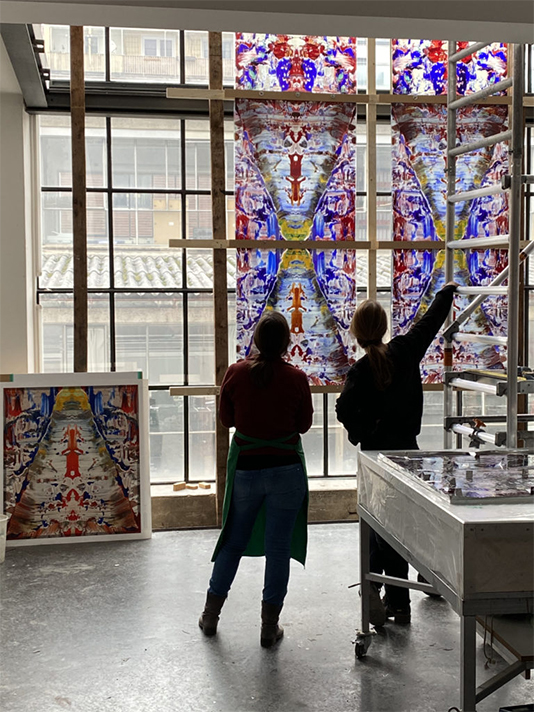
At the Munich workshop studio of Gustav van Treeck, artists observe the windows.
Image courtesy of: ArtNet
In 2018, the monks and their benefactors realized the need to restore the abbey church. Inside, the corroded windows were in much need of repair. An anonymous competition was set up to select the artist most capable of redesigning the windows. However, the monks realized the need for a famous artist to design the main windows…the main attraction. The monks’ inspiration was the Abbot Choriol whose cathedral windows in Metz, France, were designed by Marc Chagall. The high-profile windows attract thousands of visitors each year.
A German artist would make the most sense and thus, Richter came to find. However the abbot thought that the esteemed artist would “politely decline.” The Abbey’s organist wrote to Richter and asked him if would consider creating a design. Soon thereafter, Richter left a message that said (courtesy of an article in The New York Times by Catherine Hickley), “Gerhard Richter from Cologne here. It’s about the oldest monastery in Germany. It all sounds wonderful, but I am too busy and simply too old. I don’t think I can do it.” After a short pause on the message, he continued, “Although- I would like to do it.”
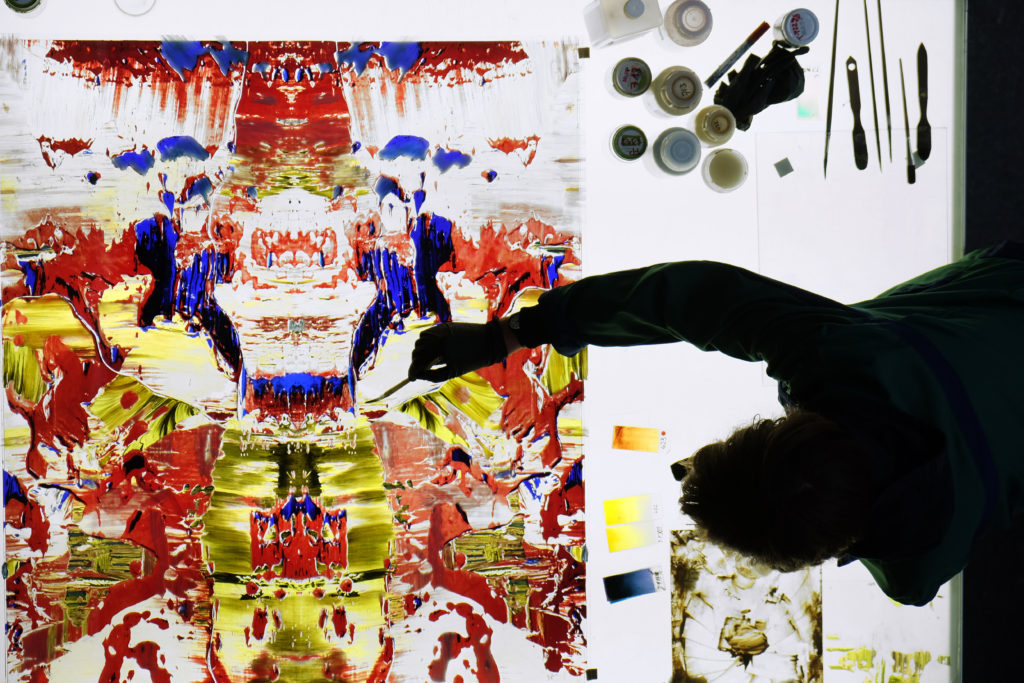
The abstract design up close…
Image courtesy of: ArtNet
The windows’ designs have both recurring patterns and intense colors. Each window has five different motifs that are vertically and horizontally mirrored through an intense process that involves digital imaging and careful handiwork. The artwork was inspired by 1990’s “Abstract Painting,” an oil on canvas painting that sold at Christie’s in 2006 for $1.3 million. The design also resembles a Persian rug design… some questioned whether this arrangement might have been better suited for a mosque.
The irony continued in that the artist who won the competition to design the other 34 windows was Mahbuba Maqsoodi. The artist grew up in a Muslim family; she was granted political asylum in Germany in 1994. Maqsoodi was a trained artist and first encountered Western art in St. Petersburg where she earned a Ph.D. in art history. Maqsoodi said, “My art is a synthesis of everything that has influenced and shaped me.”
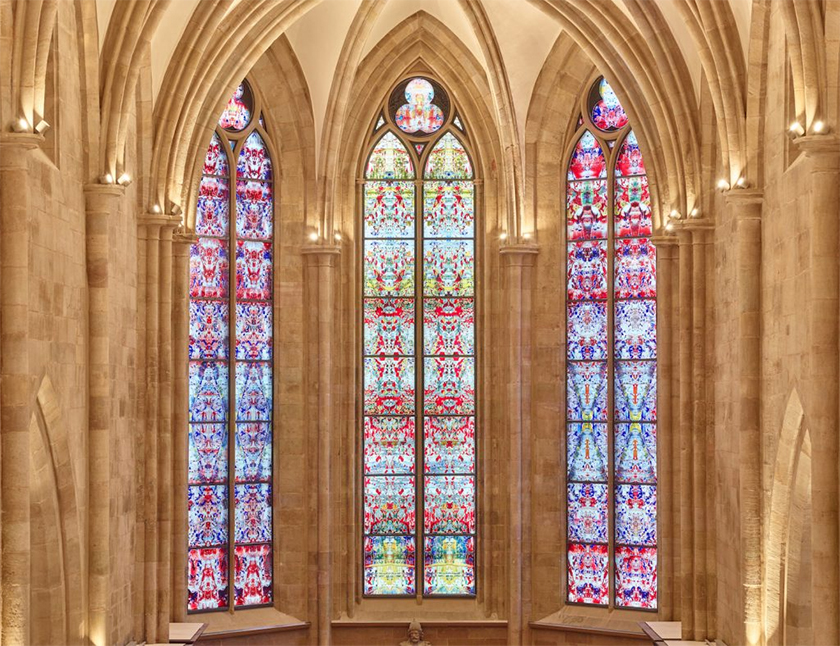
Detail view of Richter’s stained glass windows.
Image courtesy of ArtNet
Richter divided his “Abstract Painting” into a series of vertically mirrored patterns; then, he mirrored each of those patterns horizontally. The three sets of windows contain five mirrored sections apiece. The end product is 100% abstract and even though Richter does not affiliate with any religion, the surroundings make the windows feel as though they do have a sort of religious character to them. Similar to Richter’s other more famous works, the references and symbols in the design allow the audience to come up with their own interpretations.
Hopefully, the small village of Tholey and the Benedictine monks are ready for the influx of visitors that will surely come to see these masterpieces in person!

